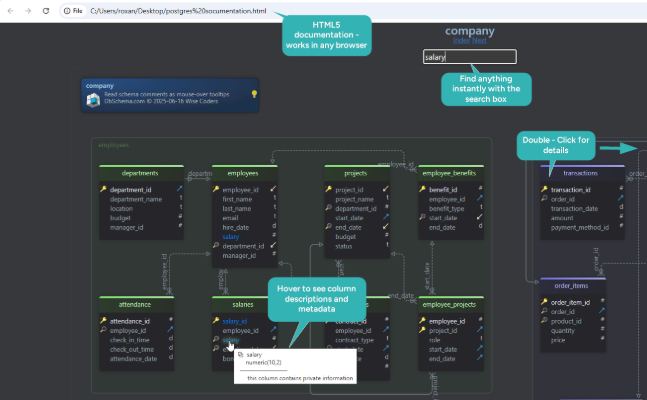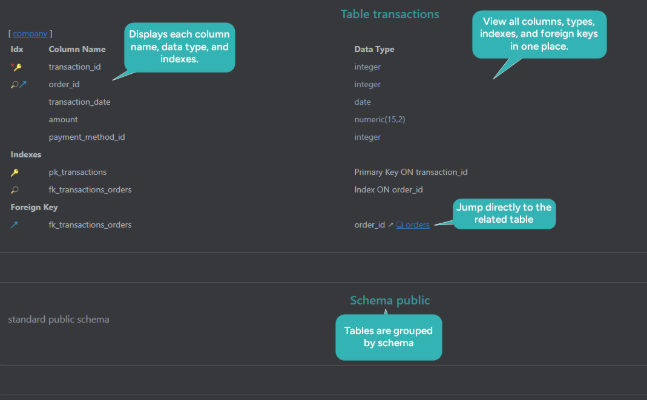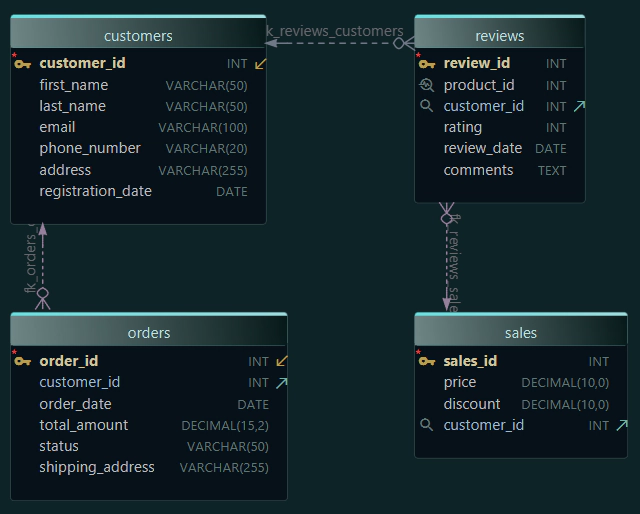How to Document a PostgreSQL Schema in 2025

Let’s be honest, PostgreSQL is great, but documenting its schema isn’t. You open the database, and all you get is a list of tables. If you’re lucky, maybe a few constraints. But if you want to understand how the database works, or explain it to someone else... good luck.
I’ve seen this problem a lot, especially in teams. Everyone assumes someone else is handling the documentation. Then months later, you’re stuck trying to figure out what client_log_v2 was meant to do.
That’s why I started using DbSchema. It gives you diagrams, interactive docs, and actual context, without having to dig through SQL files or guess what each table is doing.
Here’s how I document PostgreSQL databases now. It saves me time and makes it way easier to collaborate with the team.
Visual Diagrams to Understand Your Schema Fast
DbSchema connects to your PostgreSQL database and instantly builds an ER diagram of all your tables, columns, and foreign keys.
You can move tables around, create multiple diagrams, group related tables, and get a full picture of your structure, something you don’t get from any regular database tool.

Generate HTML5 Documentation That’s Clickable and Shareable
Instead of writing documentation manually or pasting screenshots in a PDF, I just export it as interactive HTML5 docs.
Each table is clickable. You can open it, see its columns, foreign keys, comments, even navigate between related tables.
It’s basically a mini website for your schema - not just for developers, but also for data analysts who just want to click around and understand how things connect.
Add Descriptions and Tags to Tables, Columns, and Relationships
It’s much easier to work with a schema when you understand what each part is for, especially when you’re jumping into someone else’s work, or coming back to a project months later.
In DbSchema, you can write descriptions for everything - tables, columns, and foreign keys. These are visible right inside the diagram or HTML5 documentation, and they can also be exported into the actual PostgreSQL schema using COMMENT ON statements.
You can also assign tags to tables and columns. Tags help you group, filter, or highlight parts of the schema, and they’re really useful if you're using automation scripts or generating partial deployments. For example, you can tag all analytics tables and only export or update those.
It’s a simple way to bring clarity into complex database projects, and it pays off in every future interaction with your schema.
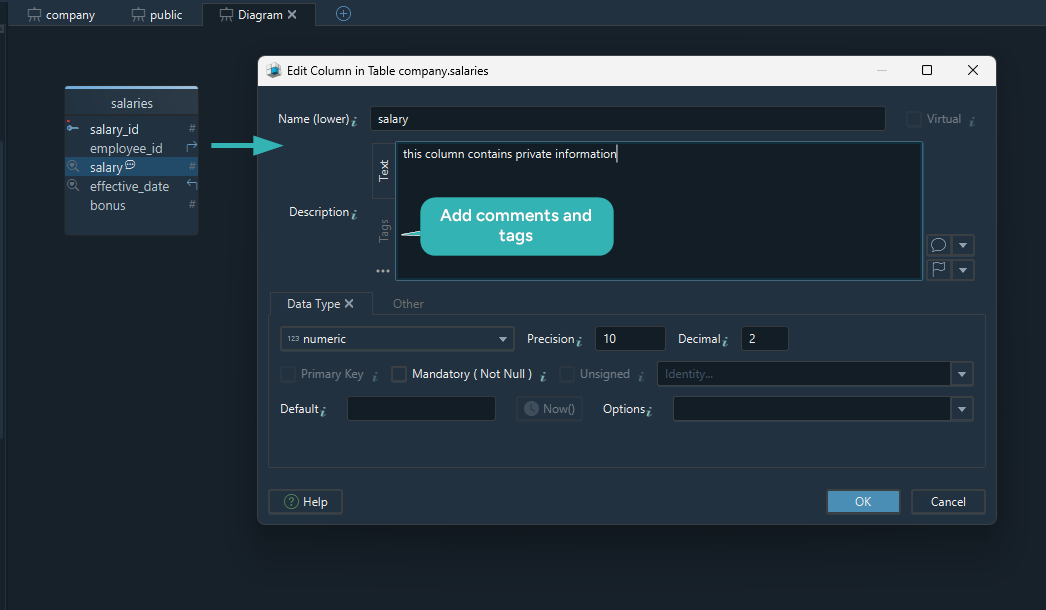
Git Integration to Track and Share Schema Changes
DbSchema works with Git, so you can save your schema design like you would any other project.
You can commit changes, view diffs, and collaborate with others safely. This is especially useful when more people are working on the schema or testing different versions.

Sync the Design Model with Your Live PostgreSQL Database
Schema changes don’t always happen inside your design tool. Sometimes, someone edits the database directly: adds a table, renames a column, or updates constraints, and you’re left wondering if your model is still up to date.
DbSchema lets you compare your design model with the live PostgreSQL database. You’ll see exactly what’s different and can decide whether to pull the changes into your model or push your model back to the database.
This works even when you're using Git to collaborate - you can stay in sync with both the team and the actual database. And because the design model is stored locally, you can keep working offline and sync later when you reconnect.
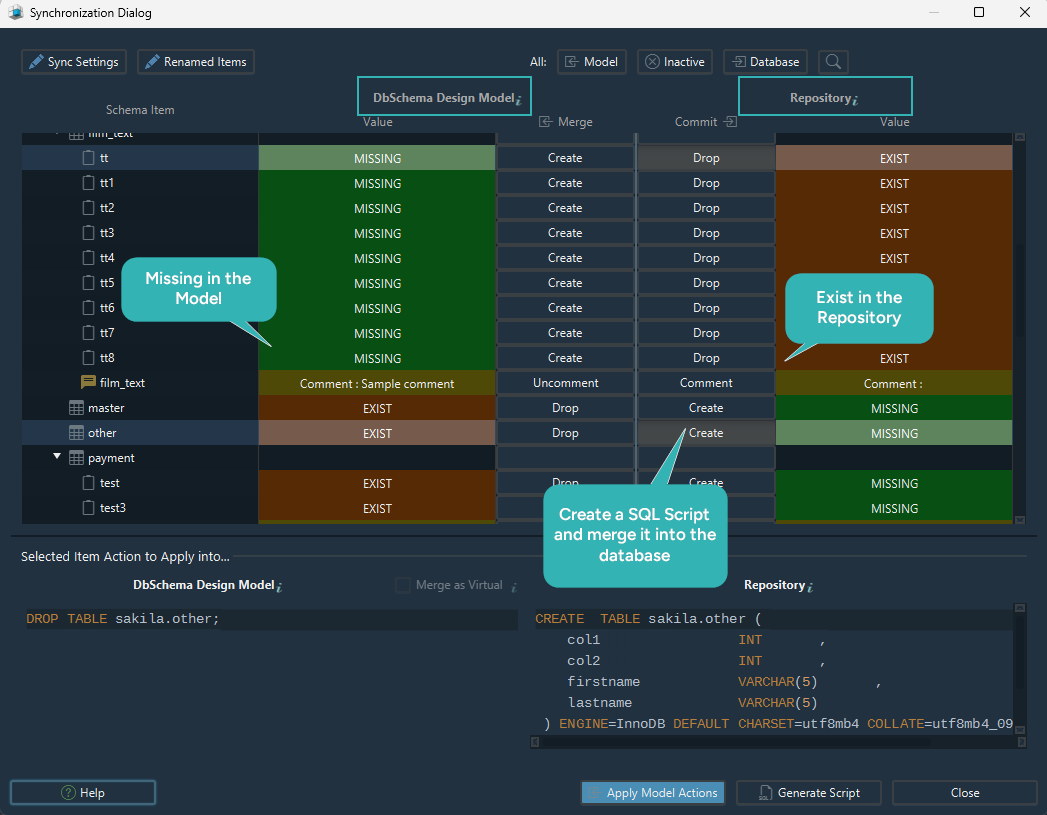
Include Views, Procedures, and Triggers in the Documentation
PostgreSQL databases aren’t just tables, you probably have logic in views, stored procedures, and triggers.
DbSchema includes these in the model, and you can describe them just like tables. When you export documentation, they’re there too, giving a full picture of how the data flows and reacts.

Add Sample Data Using the Built-in Data Generator
Having example data makes documentation more practical, especially for new team members or QA.
DbSchema can generate random but realistic data for your tables, so your schema isn’t empty. It helps illustrate how relationships work and what kind of data is expected.
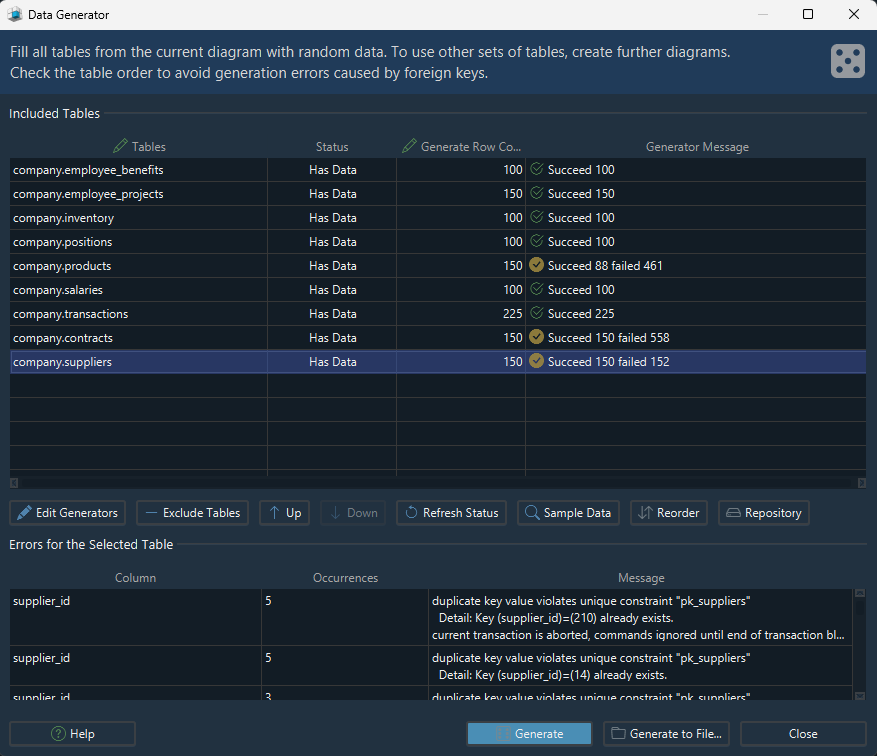
Explore Real Data Visually with the Relational Data Editor
DbSchema includes a visual data browser. You can open a table, see the rows, and follow foreign keys to connected records, without writing SQL joins.
This is perfect when you want to understand how your data is structured in real use, or when testing constraints.
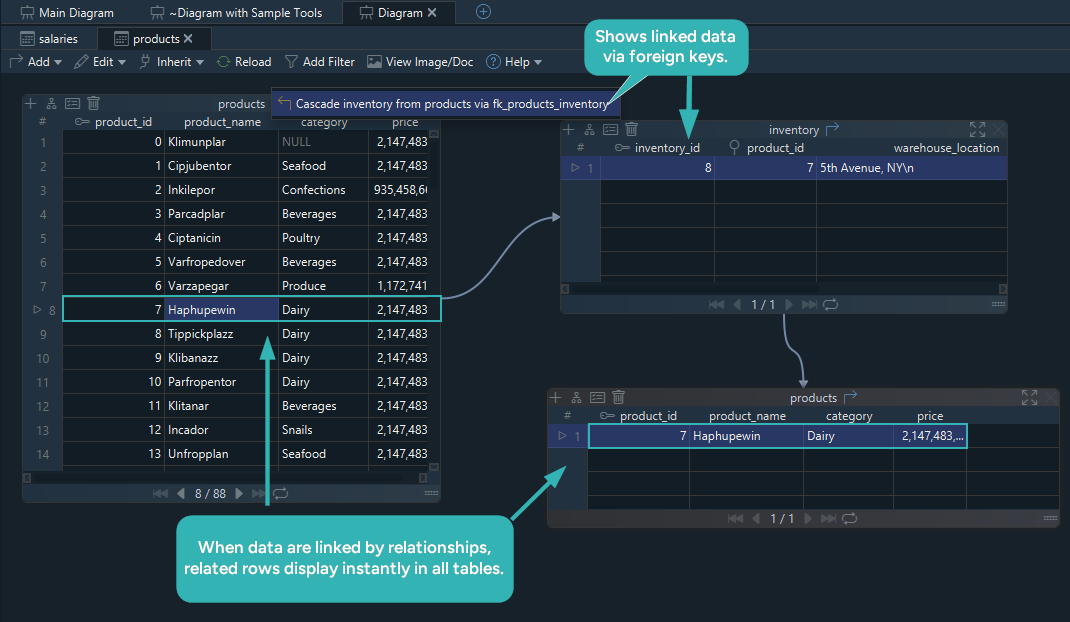
You can also export your documentation as PDF or Markdown if that’s what your team prefers. It’s a quick way to include it in internal wikis, reports, or offline files.
Read more about export options here!
Final Thoughts
Documenting your PostgreSQL schema shouldn’t feel like extra work. With DbSchema, it becomes a part of the design process - visual, trackable, and easy to share.
If you want better collaboration, cleaner handovers, and a schema you can understand, give DbSchema a try.
Download it from here!
